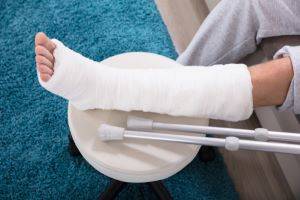How Different Types of Bone Fractures Can Affect Injury Victims

 Serious injuries can occur in a wide variety of situations, such as car accidents, motorcycle accidents, or construction site accidents. Broken bones are a common issue experienced by injury victims, and they can cause a great deal of pain and lead to temporary or permanent disabilities that may affect a person’s ability to work and complete their daily activities. By understanding the nature of a bone fracture, the amount of time it will take to heal, and the limitations it may place on their life, victims can ensure that they are taking the right steps to receive the compensation they deserve from those who were responsible for their injuries.
Serious injuries can occur in a wide variety of situations, such as car accidents, motorcycle accidents, or construction site accidents. Broken bones are a common issue experienced by injury victims, and they can cause a great deal of pain and lead to temporary or permanent disabilities that may affect a person’s ability to work and complete their daily activities. By understanding the nature of a bone fracture, the amount of time it will take to heal, and the limitations it may place on their life, victims can ensure that they are taking the right steps to receive the compensation they deserve from those who were responsible for their injuries.
Types of Fractures
Bone fractures can fall into multiple different categories, and some of the most common types of fractures include:
-
Stable fractures – If the parts of a broken bone line up correctly without being out of place, a cast or brace may be used to ensure that the bones remain in the correct position while they heal.
-
Displaced fractures – If the pieces of a broken bone are out of alignment with each other, the bone will need to be set in place. In some cases, traction may be necessary to pull the bones into the correct alignment.
-
Spiral fractures – Violent twisting of the arms or legs can cause a fracture that spirals around a bone in a corkscrew pattern. While stable spiral fractures may be treated by immobilizing the bone through the use of a cast, displaced spiral fractures will often require surgery to set the pieces of the bone in place.
-
Compression fractures – Bones may become crushed or flattened due to impact with heavy objects. These types of fractures often occur in the spine, and they can result in serious pain and loss of mobility. Surgery or physical therapy may be needed to address these issues.
-
Segmental and comminuted fractures – A bone may break into multiple pieces. This can make it more difficult to reset the bone to the proper alignment, and bone fragments at the site of the fracture can cause additional medical complications. Surgery may be needed, and pins, rods, or screws may be used to secure the pieces of the bone in place while it heals.
-
Compound fractures – In some serious cases, the broken ends of a bone may protrude through the skin. This can cause damage to muscle and nerve tissue, and it may also lead to dangerous infections.
While some bone fractures can be a relatively minor inconvenience while they heal, others can restrict a person’s movements and affect their daily activities. If a person spends most of their time on their feet, a broken leg may make it impossible to perform work while recovering. Broken bones in the arms, wrists, or hands can affect a person’s ability to perform manual tasks, and in serious cases, a victim may never be able to return to the activities they were able to do before their injury. The location of a fracture can also play a significant role in a person’s long term prognosis. Fractures in a joint or that affect a joint can cause arthritis, resulting in increasing disability as the person ages.
Contact Our Appleton Personal Injury Attorneys
If you have suffered a bone fracture that occurred because of someone else’s negligence, Herrling Clark Law Firm Ltd. can help you take legal action to receive compensation that addresses your damages, including medical expenses, loss of income, and pain and suffering. We will work to gather evidence to demonstrate liability for your injury, including pictures or footage of the incident, medical records, recordings or transcripts of 911 calls, and statements from witnesses. With our help, you can receive the financial resources you need to fully recover. Contact our Green Bay broken bone injury lawyers by calling 920-739-7366 to arrange a free consultation.
Sources:
https://www.southshoreorthopedics.com/common-types-of-bone-fractures/
https://orthoinfo.aaos.org/en/diseases–conditions/fractures-broken-bones/